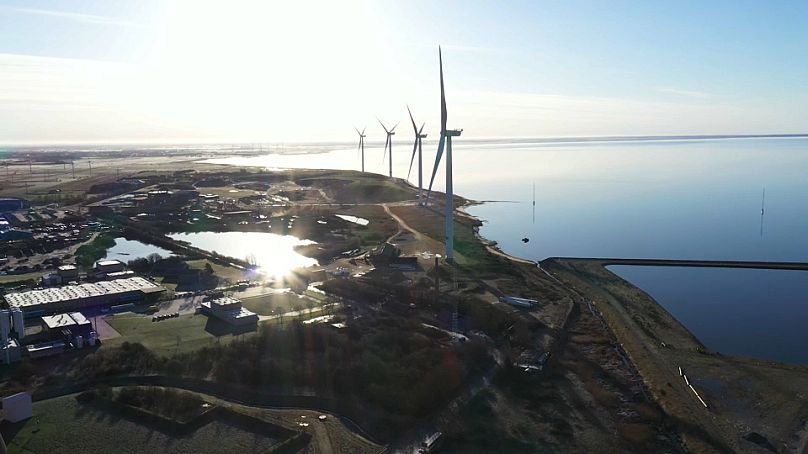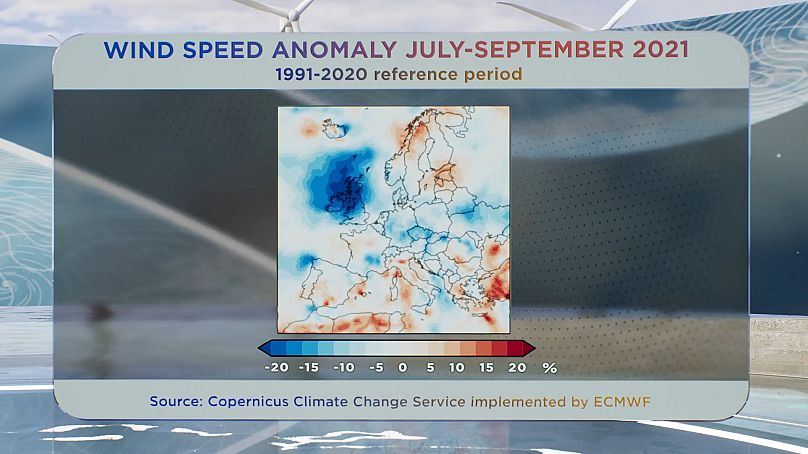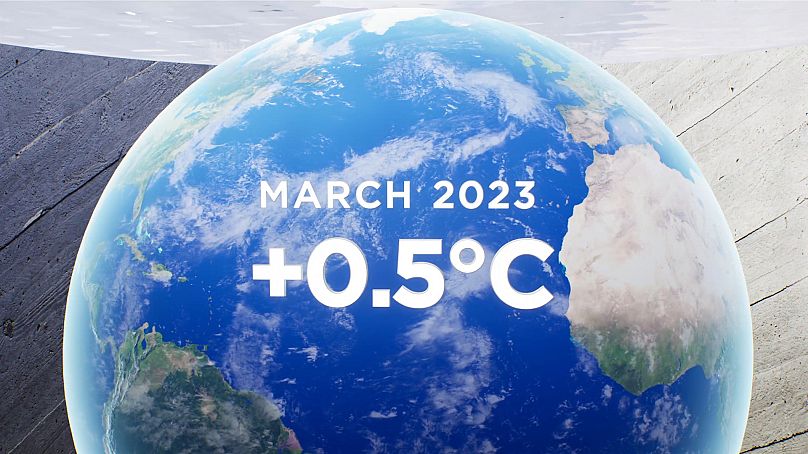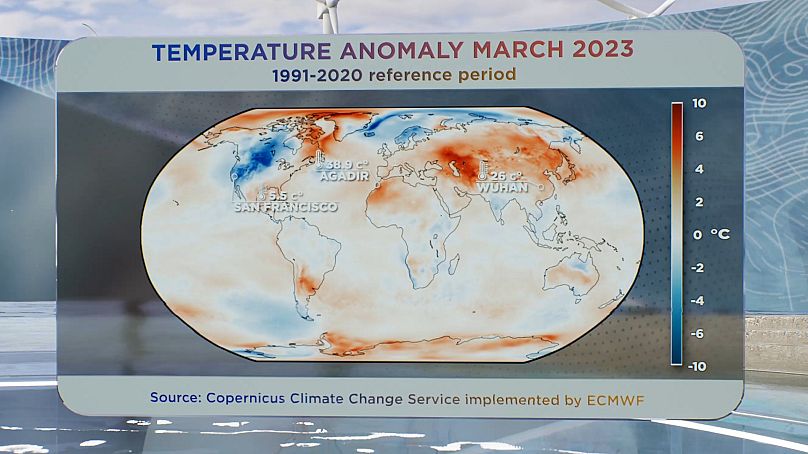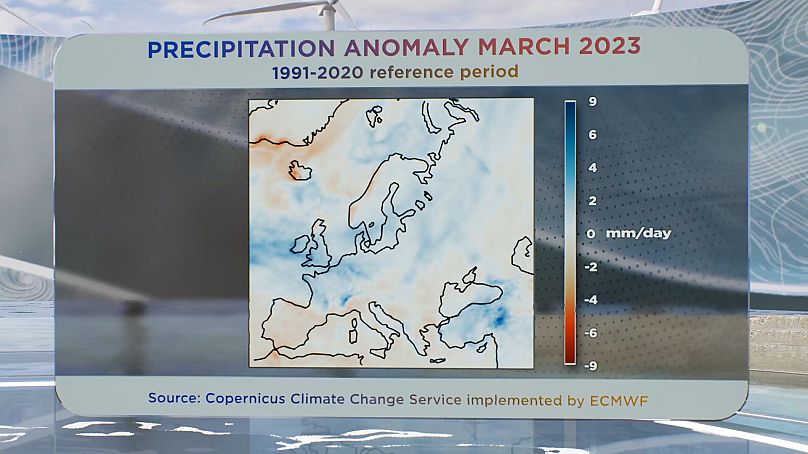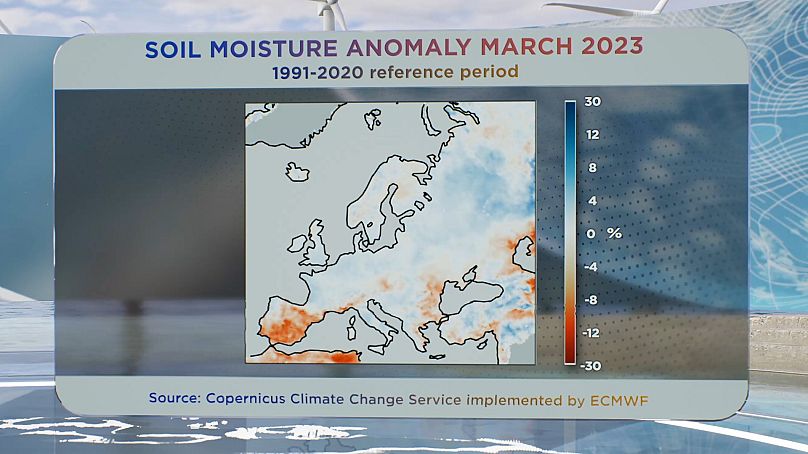Several EU countries are implementing ambitious plans to turn the North Sea into a green energy powerhouse. But what will happen if global warming causes wind speeds to drop?
Several EU countries are implementing ambitious plans to turn the North Sea into a green energy powerhouse. But what will happen if global warming causes wind speeds to drop?
Denmark at the epicentre
Esbjerg in Denmark is at the epicentre of Europe’s offshore wind energy boom.
Lying on the North Sea coast, the scale of what’s happening to the port is truly epic. That’s because the EU is not only pushing for renewables like wind, so it can deliver on its climate promises, it’s also racing to wean itself off Russian hydrocarbons.
"The demand is exploding and looking forward we already know now that in 2025 we are sold out," says the port's Chief Commercial Officer Jesper Bank. "The ambitions by the governments, by the big energy companies are there. We know there is the demand for offshore wind. And that’s very steady for the next eight, 10 years."
It’s not hard to guess why the North Sea has been chosen. It’s one of the windiest places on earth. By the end of this decade, the goal is for offshore wind to generate 65 gigawatts – that’s the equivalent of 30 nuclear reactors.
What happens when the wind speed drops?
But what happens when the wind speed drops? And is global warming causing so-called wind droughts to happen more often?
"Climate change definitely can have an impact on wind variability," says Matti Juhani Koivisto, Senior Researcher at DTU Wind and Energy Systems. "There’s a lot of uncertainty, we should say, between the models. But they seem to show a slight increase in variability, especially a bit more wind droughts."
The UK and Ireland experienced well below-average wind speeds between July and September 2021 as the areas in this map in blue show.
If repeated this year, how might that impact our energy security?
“We are prepared for them already now," says Koivisto. "Because we already see them now, we have ways of managing that, and even if they become a little bit more frequent in the future, we have the technologies to cope with it.”
One way the industry is attempting to keep the turbines turning is to make them more efficient.
“At lower wind speeds turbines produce less power," says Kenneth Thomsen, Head of Division at DTU Wind Turbine Design. "But we can change the design so that we have a bigger rotor compared to the generator and then it meets the rated power, sooner at a lower wind speed. And it means that it produces more constant power, even at lower wind speeds.”
In the years ahead, our ability to measure and assess wind variability will be vital. Having reliable data about wind droughts and predictions of the conditions that we may face, will be crucial to manage effectively, with wind being just one component in a broader renewable European energy system.
The second-warmest March on record
The latest data from the Copernicus Climate Change Service shows that March 2023 was 0.5° Celsius above the 1991 to 2020 average.
The temperature anomaly map indicates it was much warmer across a large area of the planet. The red band on this map shows the higher temperatures for March all the way from Morocco to Japan.
There were many new temperature highs for the month - for example, the beach resort of Agadir hit 38.9° at the end of March. And earlier in the month Wuhan in China hit 26°, 12° degrees above average for the time of year.
Meanwhile it was colder across parts of the western US and Canada. San Francisco dropped to 5.5° on 27th March, the lowest it's been on that day since 1898.
Precipitation anomalies
In Europe, all the areas in blue on this map were wetter than average last month, from Ireland and France in the west to Russia in the east:
Türkiye had the highest rainfall while it rained or snowed less than average in most of southern Europe. That precipitation anomaly is partially mirrored in soil moisture anomaly.
The soil in much of the Iberian Peninsula is considerably drier than average for the time of year.












